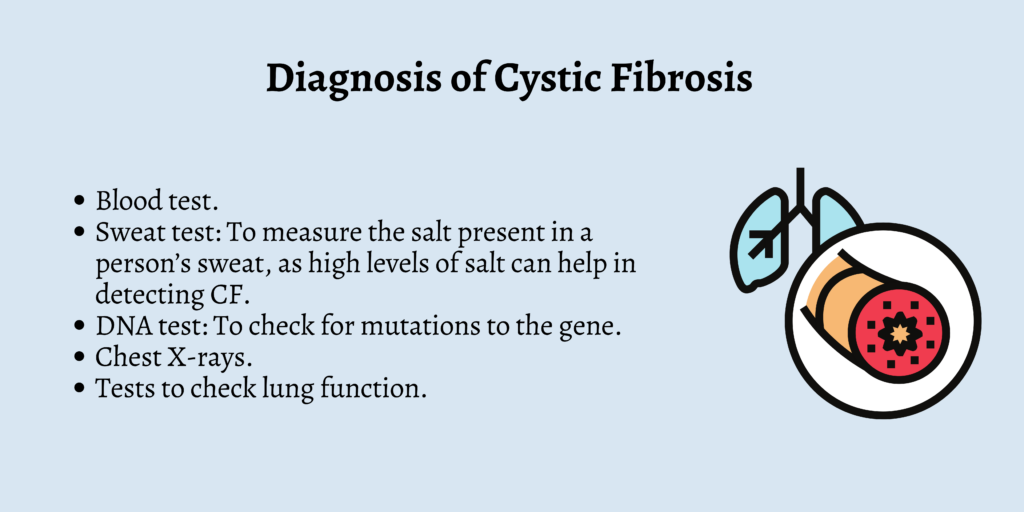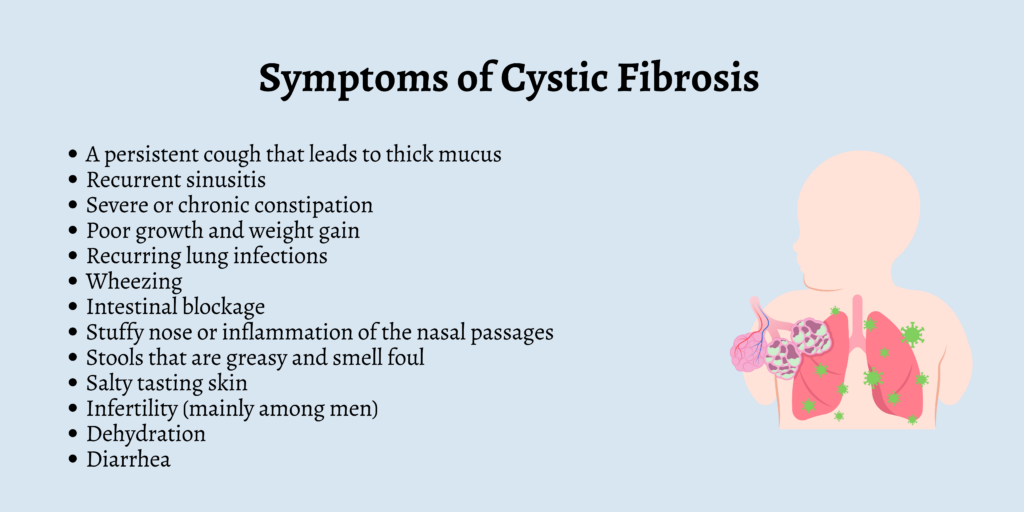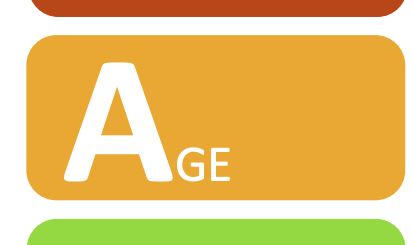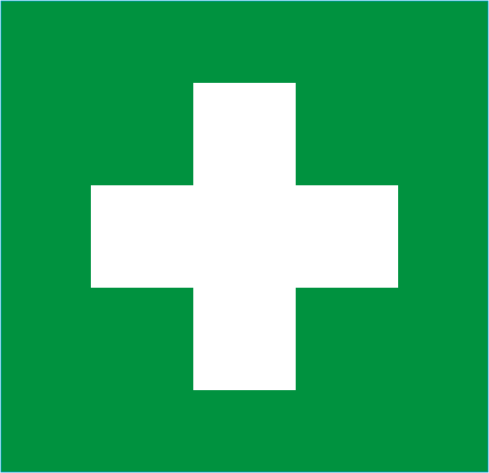A Guide To Cystic Fibrosis (CF) For First Aiders
Cystic fibrosis (CF) is a genetic disorder that leads to the buildup of thick and sticky mucus in a person’s organs, including the pancreas and lungs.
The mucus that usually lines one’s body cavities and organs is supposed to be watery and slippery. However, when someone suffers from cystic fibrosis, their airways get clogged with thick mucus, making it difficult for them to breathe.
Since it also causes blockage in the ducts in the pancreas, it becomes difficult for the person to digest their food. As the condition is progressive and chronic, it also affects an individual’s intestine, sinus, liver, and sex organs.
Another form of the disorder is known as atypical cystic fibrosis, which affects just one organ and is milder than the classic form of the disease. While cystic fibrosis usually occurs during the first few years of a person’s life, the atypical form can occur when an individual is much older.
Symptoms of Cystic Fibrosis
A couple of the symptoms of cystic fibrosis include:
- A persistent cough that leads to thick mucus
- Recurrent sinusitis
- Severe or chronic constipation
- Poor growth and weight gain
- Recurring lung infections
- Wheezing
- Intestinal blockage
- Stuffy nose or inflammation of the nasal passages
- Stools that are greasy and smell foul
- Salty tasting skin
- Infertility (mainly among men)
- Dehydration
- Diarrhea
Causes of Cystic Fibrosis
Cystic fibrosis is caused due to a mutation or changes in a gene known as cystic fibrosis transmembrane conductance regulator or CFTR. The gene is responsible for controlling the flow of fluids and salt in and out of a person’s cells.
When the CTFR gene is faulty or doesn’t function efficiently, it causes mucus buildup in the body. If a person suffers from cystic fibrosis, it entails inheriting the mutated copy of the gene from both their parents.
In case an individual inherits just one copy of the gene, they won’t display any symptoms, but they could be a carrier, which increases the risk of them passing it on to their kids.
Diagnosis of Cystic Fibrosis

The following are some of the ways in which a medical professional can conduct a diagnosis of cystic fibrosis:
- Blood test.
- Sweat test: To measure the salt present in a person’s sweat, as high levels of salt can help in detecting CF.
- DNA test: To check for mutations to the gene.
- Chest X-rays.
- Tests to check lung function.
Screening And Testing for Cystic Fibrosis
When it comes to screening and testing for cystic fibrosis, here’s what you should know:
- Newborn screening: This is done among newborns a few days following their birth. Early detection allows doctors to provide the necessary medicines and make the parents aware of the ways to keep their child healthy. It can take more than a week to derive the results of newborn screening.
- Sweat test: If the prenatal genetic test or newborn screening is positive, a sweat test will be scheduled once the baby is 48 hours old. This test helps measure the salt present in a baby’s sweat and is one of the most conclusive tests regarding cystic fibrosis.
Treatment For Cystic Fibrosis
As cystic fibrosis can’t be prevented, there are a range of treatments that can help in reducing or preventing complications, controlling the symptoms, and making it easier for the patient to live with the disorder.
Listed below are some of the treatment options:
Medications
Examples of medications that can aid in alleviating the symptoms of cystic fibrosis are:
- Antibiotics: These treat or prevent lung infections and enable the patient’s lungs to function more effectively.
- Anti-inflammatory medicines: Your doctor could recommend corticosteroids or ibuprofen in this category.
- Mucus thinners: These help in clearing the airways.
- Bronchodilators: These open and relax the airways and help in getting rid of the mucus from the lungs.
Airway Clearance
Certain airway clearance techniques one can try are:
- Percussion: This can be done by clapping or tapping on one’s back or chest in order to clear the lungs of mucus.
- Breathing techniques: These help in loosening and dislodging the mucus.
- Vibration: For this technique, one needs to exhale while their therapist performs repetitive and light movements against their chest.
- Oscillating devices: These devices help in vibrating or oscillating the airways.
Surgery
If you suffer from cystic fibrosis, you might need one of the following surgeries:
- Transplant surgery
- Bowel surgery
- Surgery on the sinuses or nose
Nutritional Therapy
Nutritional therapy for cystic fibrosis can include:
- Consuming pancreatic enzyme supplements. These help in improving the patient’s bowel movements and preventing vitamin deficiencies and malnutrition.
- Increasing the intake of salt and calories.
- Resorting to a diet that’s high in fat.
First Aid For Cystic Fibrosis
When someone suffers from cystic fibrosis, it is difficult for them to absorb nutrients or digest their food. Therefore, see to it that the patient consumes extra nutrients and calories so that they don’t become malnourished.
Feeding them digestive enzyme capsules and providing them with a high-calorie diet is crucial in such situations.
How to Prevent Cystic Fibrosis
Since cystic fibrosis is an inherited condition, it can’t be prevented. If you or your partner have a family history associated with this disorder, it’s best to reach out to a genetic counselor prior to making the decision to have children.
FAQs
1. What are the symptoms of cystic fibrosis?
Some of the symptoms of cystic fibrosis include trouble with growth and weight gain, infertility, diarrhea, and dehydration.
2. What causes cystic fibrosis?
Cystic fibrosis is caused when a person inherits the mutated copy of the CFTR gene from both their parents.
3. Can cystic fibrosis only happen to children?
No, cystic fibrosis doesn’t only occur among children.
4. How is cystic fibrosis diagnosed?
The diagnosis of cystic fibrosis often includes a sweat test, DNA test, or blood test.
5. What are the ways to treat cystic fibrosis?
Some ways to treat cystic fibrosis are through medication, airway clearance techniques, and surgery.
Conclusion
The ways to look after oneself when you suffer from CF will depend on whether you’re a child or an adult. Make sure to diligently follow the recommendations and suggestions of your doctor, including indulging in exercise and eating well.
Remember to follow up on the necessary vaccines, wash your hands properly, and maintain your distance from the ones who are ill. Showing up for the scheduled appointments with your doctor is crucial to monitor your condition and examine if you need help with anything at all.






